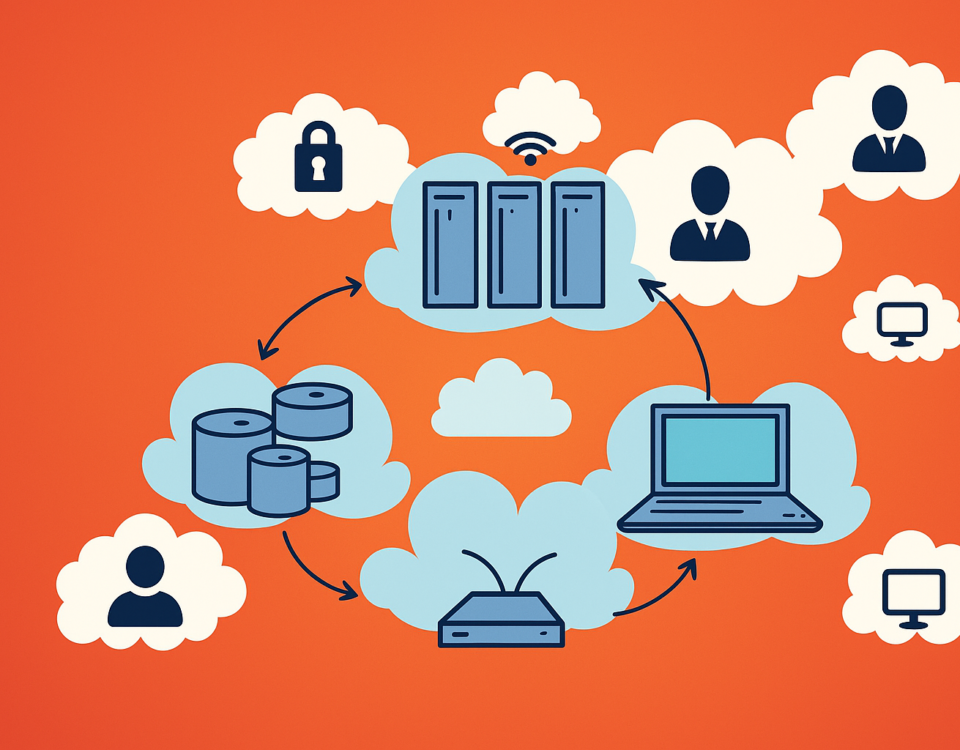Why is Continuous Monitoring Essential for Cybersecurity

In October 2023, A ransomware attack hit TransForm Shared Service Organization, an IT provider for five southwestern Ontario hospitals. The attack forced hospitals to postpone cancer treatments. Over 516,000 patients had their health records stolen. The financial damage? Over $7.5 million.
The investigation shows something chilling. Hackers used compromised admin accounts for months before striking. No multi-factor authentication. No continuous monitoring in cybersecurity to catch the suspicious activity.
According to the “State of Cybersecurity in Canada 2025” report, the country’s critical sectors face an escalating wave of cyber threats, with ransomware attacks becoming inevitable and a severe cybersecurity workforce shortage leaving the nation vulnerable.
This wasn’t a sophisticated nation-state attack. Basic monitoring would have spotted the unusual admin account behavior weeks before the ransomware was deployed.
What is Continuous Monitoring in Cybersecurity?
Continuous monitoring in cybersecurity is an ongoing, automated process of observing and analyzing an organization’s IT environment to detect security vulnerabilities, anomalies, misconfigurations, and emerging threats in real-time, rather than relying on periodic checks.
Unlike monthly or quarterly scans, it uses log management, SIEM systems, v intrusion detection, and behavioral analysis. By providing constant visibility and quick alerts about security incidents, it enables security teams to proactively identify vulnerabilities and resolve weaknesses before attackers can exploit them, thereby preventing data breaches and maintaining compliance.
This creates a full picture of the threat landscape for Canadian businesses. The Canadian Centre for Cyber Security (CCCS) emphasizes constant vigilance. This means aligning with CCCS guidelines for baseline controls, helping businesses from newcomers to established owners maintain security without overwhelming complexity.
Why is Continuous Monitoring Needed?
Continuous monitoring is vital in cybersecurity because the fast pace of attacks and sophisticated hacker techniques demand constant vigilance, moving defenses from reactive to a proactive approach to identify threats before they escalate and to protect businesses from evolving risks that traditional defenses can’t handle alone.
Detect Fast Breaches
Cyberattacks can exploit digital assets and weaknesses in seconds, making real time visibility crucial to minimize damage. Cyber threats outpace traditional defenses. 1 in 6 (16%) of Canadian businesses were impacted by cyber security incidents in 2023.
Continuous monitoring provides the insights needed to act swiftly, preventing small issues from escalating into major security incidents.
Compliance Requirements Often Mandate It
PIPEDA mandates breach reporting as soon as feasible. Quebec’s Law 25 adds stricter rules, making implementing continuous monitoring essential for compliance. Many regulations require logging and reporting of security incidents, with non-compliance leading to fines.
Continuous monitoring automates these processes, generating reports that simplify audits and ensure adherence. For Canadian businesses, this is critical, as the Privacy Commissioner emphasizes 24-month retention of logs, helping newcomers avoid penalties while owners streamline legal obligations.
What Does Effective Continuous Monitoring Look Like?
Continuous monitoring constantly collects and analyzes data from IT systems, applications, and network traffic to detect anomalies and threats in real time. It involves automated reporting to provide insights and automated response to alert teams and/or take pre-defined actions to address problems before they escalate. It involves:
-
Log Management and Analysis
Log management collects and analyzes system events. Machine learning flags deviations, supporting PIPEDA’s record-keeping requirements. Tools automatically collect data from sources like system logs, sensitive information, application activity, and user behavior.
-
Security Information and Event Management (SIEM)
A SIEM platform is your information security and risk management control room. It monitors systems, collects security data from various sources, providing a centralized view to identify security threats. IBM reports SIEM shortens breaches by 54 days, saving C$2.84 million, making it invaluable for resource-limited SMBs.
-
Vulnerability Scanning and Assessment
Continuous scanning identifies security vulnerabilities in systems and applications before exploitation, it’s akin to a health check-up that prevents small issues from becoming major problems. Verizon’s 2025 DBIR found vulnerabilities exploited in 20% of breaches—70% in espionage cases, proving why businesses need continuous scanning to stay secure.
-
User Activity Monitoring
User Activity Monitoring tracks behavioral patterns to detect unauthorized access or anomalies. According to the 2024 Verizon DBIR, a non-malicious human element was involved in 68% of breaches, highlighting how such monitoring can flag insider threats early and meaningfully reduce risk.
-
Network Traffic Analysis
Analyzing network traffic spots malicious communications and examines flows to reveal malware or suspicious activity.
Strategic Business Benefits of Continuous Monitoring
Beyond just identifying security threats, continuous monitoring enhances security posture improves operational efficiency by reducing redundancy, provides greater visibility into the IT environment, and helps prioritize risk management to protect sensitive data against costly breaches and downtime.
-
Faster Incident Response
Speed is critical in cybersecurity. Monitoring enables instant threat detection and automated incident responses. Alerts are triggered immediately, correlation engines prioritize true threats over noise, and machine learning flags subtle anomalies long before they escalate.
-
Strengthened Security Posture
Monitoring provides real-time visibility into security health. Teams address weaknesses proactively, reducing incidents, misconfigurations, and unusual behavior.
-
Streamlined Compliance Reporting
Monitoring tools generate reports and automate PIPEDA’s “as soon as feasible” breach notification requirement and 24-month breach record retention. This lowers compliance costs and reduces audit burdens.
-
Reduced False Positives
By analyzing large volumes of data, continuous monitoring can improve threat detection accuracy, leading to fewer false alarms and more effective use of security team resources.
-
Reduced Costs Over Time
Preventing data breaches and minimizing downtime through early detection and proactive measures ultimately leads to significant cost savings for the organization.
Continuous monitoring offers benefits like improved accuracy, faster response and better use of threat intelligence, extending beyond basic detection.
Getting Started with Continuous Monitoring
To get started with continuous monitoring in cybersecurity, you must assess the following:
-
Define Objectives & Scope
-
- Identify Critical Assets
Prioritize digital assets and assess the systems, data, and applications that power your operations—customer records, financials, intellectual property, cloud services. This ensures monitoring aligns with what matters most.
- Identify Critical Assets
-
- Set Clear Goals
Define what success looks like: faster detection, compliance (e.g., PIPEDA, Law 25 in Canada), reduced downtime, or improved risk visibility. You can also get cybersecurity consulting to ensure tailored strategies and expert guidance.
- Set Clear Goals
-
- Conduct Risk & Threat Assessment
Analyze internal weaknesses like outdated systems, endpoint gaps and external threats such as supply chain or vendor risks. Use this to scope your monitoring strategy.
- Conduct Risk & Threat Assessment
-
Select & Integrate the Right Tools
-
- Layered Tool Stack
Combine SIEM (Security Information and Event Management) for correlation and alerts, EDR (Endpoint Detection and Response) for endpoint behavior, and network traffic analysis (NTA) for visibility across data flows.
- Layered Tool Stack
-
- Automation-ready Solutions
Utilize tools that can automate tasks like log collection, data aggregation, and initial alert triage to free up your security team.
- Automation-ready Solutions
-
- Threat Intelligence Integration
Incorporate threat intelligence feeds into your monitoring tools to provide up-to-date context and improve alert accuracy.
- Threat Intelligence Integration
-
Develop Your Monitoring Plan
Establish clear guidelines for how you will track data, handle alerts, and respond to incidents.
-
- Create Policies & Procedures
Document roles, data collection rules, alert thresholds, escalation paths, and data retention aligned with privacy rules like PIPEDA and Law 25.
- Create Policies & Procedures
-
- Incident Response Playbooks
Outline the steps and plan your response workflows to handle security incidents —who acts, how, and when—based on threat types and thresholds, ensuring a swift and coordinated response.
- Incident Response Playbooks
-
- Ownership & Accountability
Assign responsibility clearly. Assign clear responsibilities for security controls, monitoring, investigation, escalation, audit tasks and for managing specific security controls and responding to alerts.
- Ownership & Accountability
-
Train Your Team & Implement Controls
-
- Tool Proficiency & Playbook Drills
Ensure your security team is proficient with the monitoring tools functions, alert interpretation, and incident response and understands how to interpret the insights they provide.
- Tool Proficiency & Playbook Drills
-
- Risk-Aligned Security Controls
Apply Security controls based on prioritized threats like patching, network segmentation, access controls.
- Risk-Aligned Security Controls
-
- Company-Wide Awareness
Educate all staff, not just the security team, on the importance of continuous monitoring and cybersecurity best practices like spotting phishing, following password policies, on handling sensitive information and recognizing alerts.
- Company-Wide Awareness
-
Review & Adapt
-
- Regularly Review Strategy
Routinely review monitoring effectiveness and security practices to identify areas for improvement like tune alerts, refine dashboards, and evolve policies.
- Regularly Review Strategy
-
- Stay Up-to-Date
Continuously update your monitoring tools and processes to adapt to new and emerging threats.
- Stay Up-to-Date
-
- Extend Monitoring to Partners
Extend your continuous monitoring to include third-party vendors and partners to ensure a comprehensive view of your risk posture.
- Extend Monitoring to Partners
Secure Your Data with Delvetek’s Expertise
Cyber threats are a constant risk to your operations, reputation, and bottom line. Whether from cyberattacks, human error, or system failures, the question isn’t if a breach will happen, but when.
Delvetek is your trusted partner for continuous monitoring in cybersecurity, providing the technology, strategy, and support to prevent, detect, and respond to threats effectively.
Why Canadian SMBs Choose Delvetek for Cybersecurity
- Comprehensive Threat Detection
Real-time monitoring across networks, endpoints, and cloud environments ensures no threat goes unnoticed. - Proactive Ransomware Defense
Integrated SIEM and AI-driven analytics detect and block ransomware before it spreads. - Zero Downtime Assurance
Automated alerts and rapid response keep your business operational during incidents. - Scalable Cloud Solutions
Monitoring systems designed to grow with your business, securely and cost-effectively. - PIPEDA-Compliant Strategies
Automated logging and reporting align with PIPEDA and Law 25 for seamless compliance. - SMB-Friendly Pricing
Enterprise-grade protection tailored to small business budgets.
Whether you need 24/7 threat detection, vulnerability scanning, or compliance support, Delvetek’s layered approach protects your most critical asset: your data.
Our Services Include:
- Managed Network Security & Managed IT Services – We handle your daily IT complexities—from infrastructure maintenance to disaster recovery.
- Cyber Security Consulting Services – Identify, Protect, Detect, Respond, Recover we help you identify risks, protect assets, and architect defenses tailored to your environment—across endpoints, networks, and the cloud.
- Continuous Monitoring & Threat Detection Service (SIEM/SOC) – We integrate SIEM tools, threat intelligence, and 24/7 alerting to minimize dwell time and breach impact.
- Cyber Incident Response & Recovery Solution – In the event of an attack, our team offers prompt containment, forensics-driven response, and ransomware recovery
- Compliance & Governance Support – With our Cyber Risk Assessment Services, we help you navigate Canadian regulations (PIPEDA, Law 25, and key CCCS guidelines) by embedding logging, audit trails, and threat governance into your cybersecurity strategy.
A costly breach is the last thing you need right now. Partner with Delvetek Consulting for tailored continuous monitoring in cybersecurity that meets Canadian regulations. Contact us now for a free assessment and secure your future.



